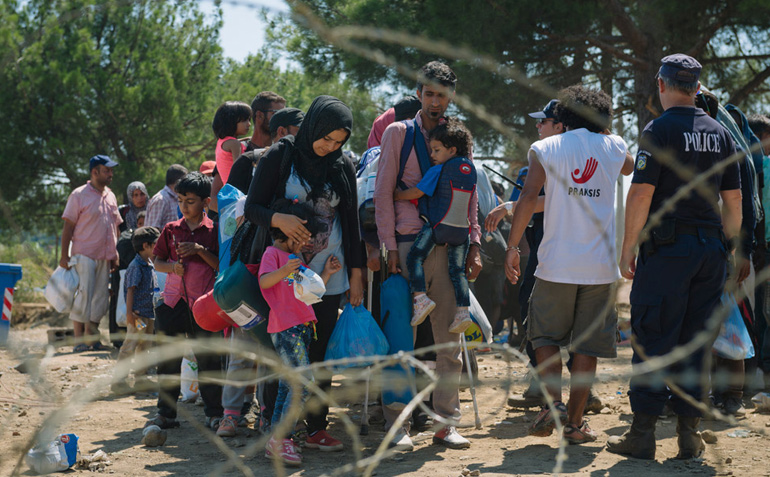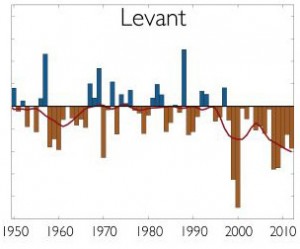Migration and the Syria Conflict
Ten years ago, drought began to parch the farm fields of Syria. As water grew scarce and crops failed, hundreds of thousands of struggling farmers migrated to the cities, where growing poverty, government mismanagement, and other factors led to an uprising in 2011. That conflict has since become a war and led to waves of refugees fleeing to Europe.
The Syrian conflict is complex, but the turmoil around the rural-to-urban migration has roots in the drought that started around 2006 and became the region’s worst on record.
Throughout history, droughts and extreme weather have contributed to mass migrations and conflicts. The Anasazi are believed to have abandoned their cliff dwellings in the U.S. Southwest during a 24-year megadrought more than 700 years ago. Tree ring evidence suggests that decades of drought, interspersed with intense monsoon rains, may have helped bring about the fall of Cambodia’s ancient Khmer civilization at Angkor nearly 600 years ago.
Today, most societies have greater resources to respond, but rising temperatures are exacerbating the drought risk. A study of the Syrian drought by Lamont scientists Richard Seager, Mark Cane, Yochanan Kushnir and former Ph.D. student Colin Kelley explained how increasing aridity in the region meant a drought this severe was two to three times more likely “as a consequence of human interference in the climate system.”
“We’re not saying the drought caused the war,” said Seager, a climate scientist. “We’re saying that added to all the other stressors, it helped kick things over the threshold into open conflict. And a drought of that severity was made much more likely by the ongoing human-driven drying of that region.”

Refugees from the Syria crisis. (UNICEF)
A growing body of research suggests that extreme weather, including high temperatures and droughts, increases the chances of violence, from individual attacks to full-scale wars. Some researchers project that manmade global warming will heighten future conflicts, or argue that it may already be doing so. Recent news accounts and other reports have linked warfare in Syria, Iraq, and elsewhere in part to environmental issues , especially lack of water. The 2015 study, combining climate, social, and economic data, is perhaps the first to look closely and quantitatively at these questions in relation to a current war.
The scientists found that since 1900, the area has undergone warming of 1° to 1.2° Celsius and about a 10 percent reduction in wet-season precipitation. They showed that the trend matches models of human-influenced global warming and that it cannot be attributed solely to natural variability.

Brown bars show dry years in the Levant, which includes Syria. (Benjamin Cook, et al. 2016)
Global warming has had two effects, they say. First, it appears to have indirectly weakened wind patterns that bring rain-laden air from the Mediterranean, reducing precipitation during the usual November-April wet season. Second, higher temperatures have increased evaporation of moisture from soils during the usually hot summers, giving any dry year a one-two punch. The region saw substantial droughts in the 1950s, 1980s, and 1990s. However, 2006-10 was easily the worst and longest since reliable recordkeeping began. The researchers concluded that an episode of this severity and length would have been unlikely without the long-term changes.
The ongoing drying in the region is also reflected in data from across the Mediterranean spanning a millennium, compiled in the Old World Drought Atlas released in 2015 by Ed Cook, co-founder of Lamont’s Tree Ring Lab. The new atlas, joining drought atlases from across North America and Monsoon Asia, maps droughts year by year across Europe and the Mediterranean, allowing researchers to pair historic documents of human migrations and famine in the region with climate fluctuations through time and develop insights into larger climate and weather patterns that could have contributed to the extremes.